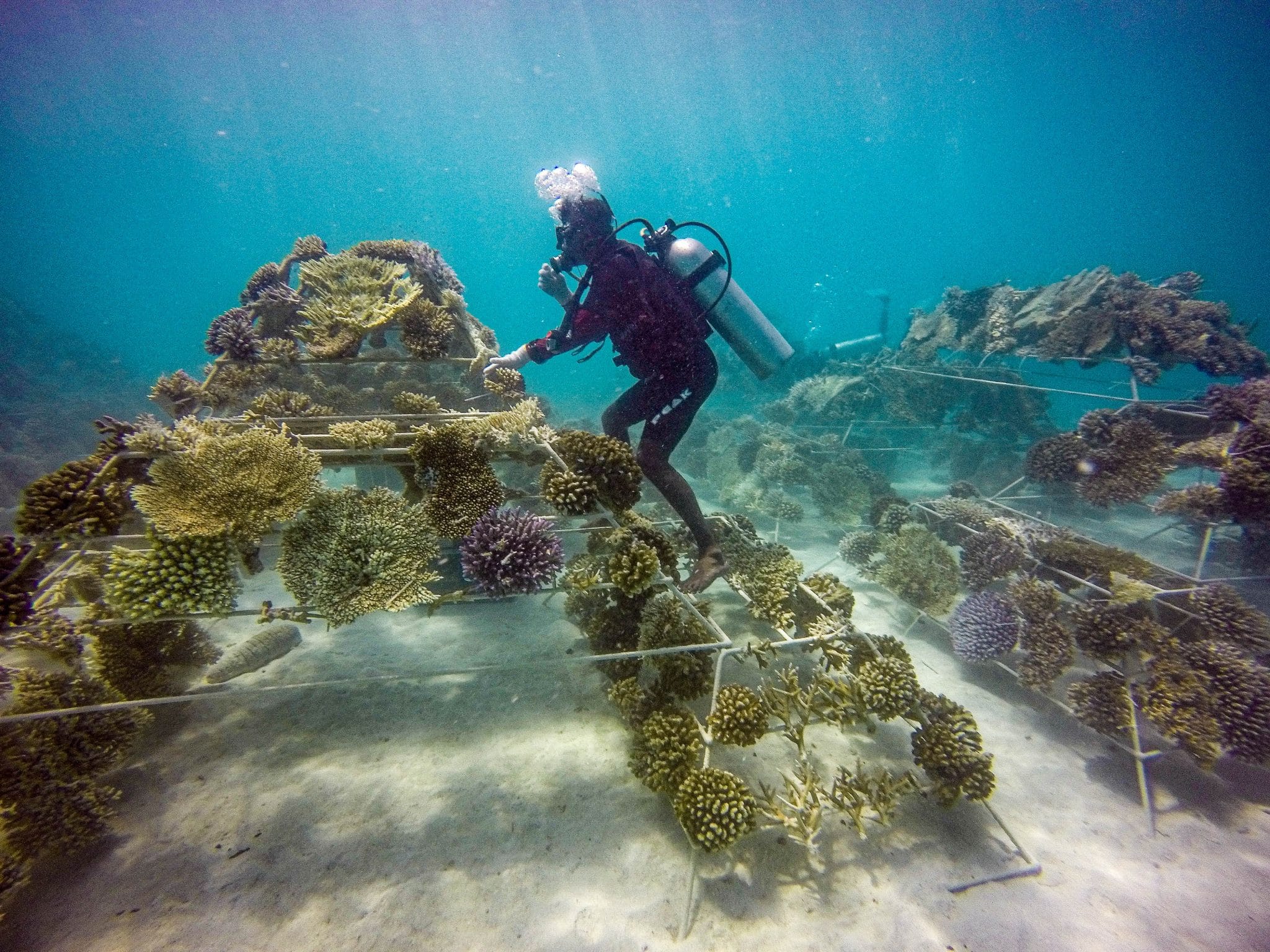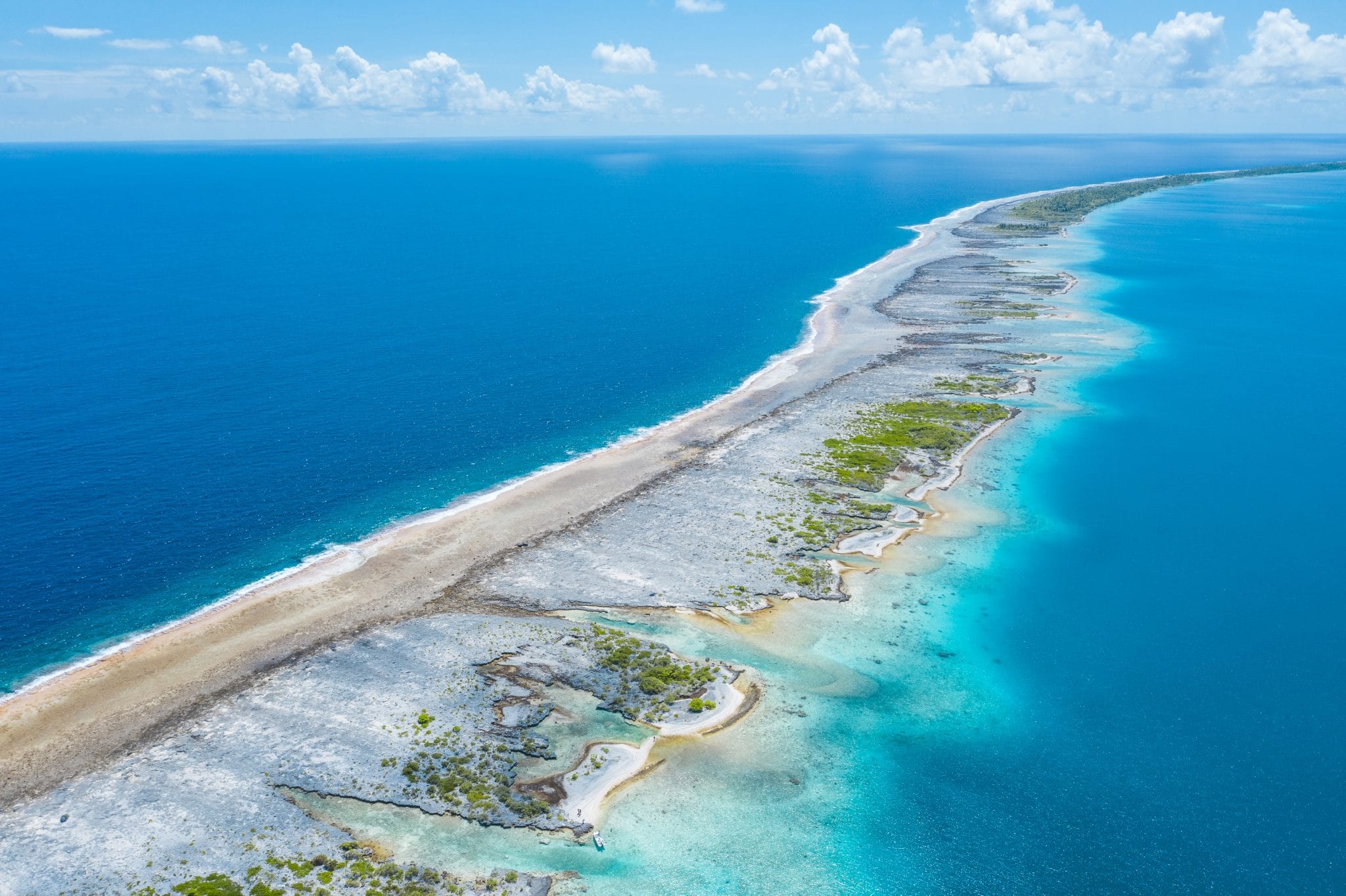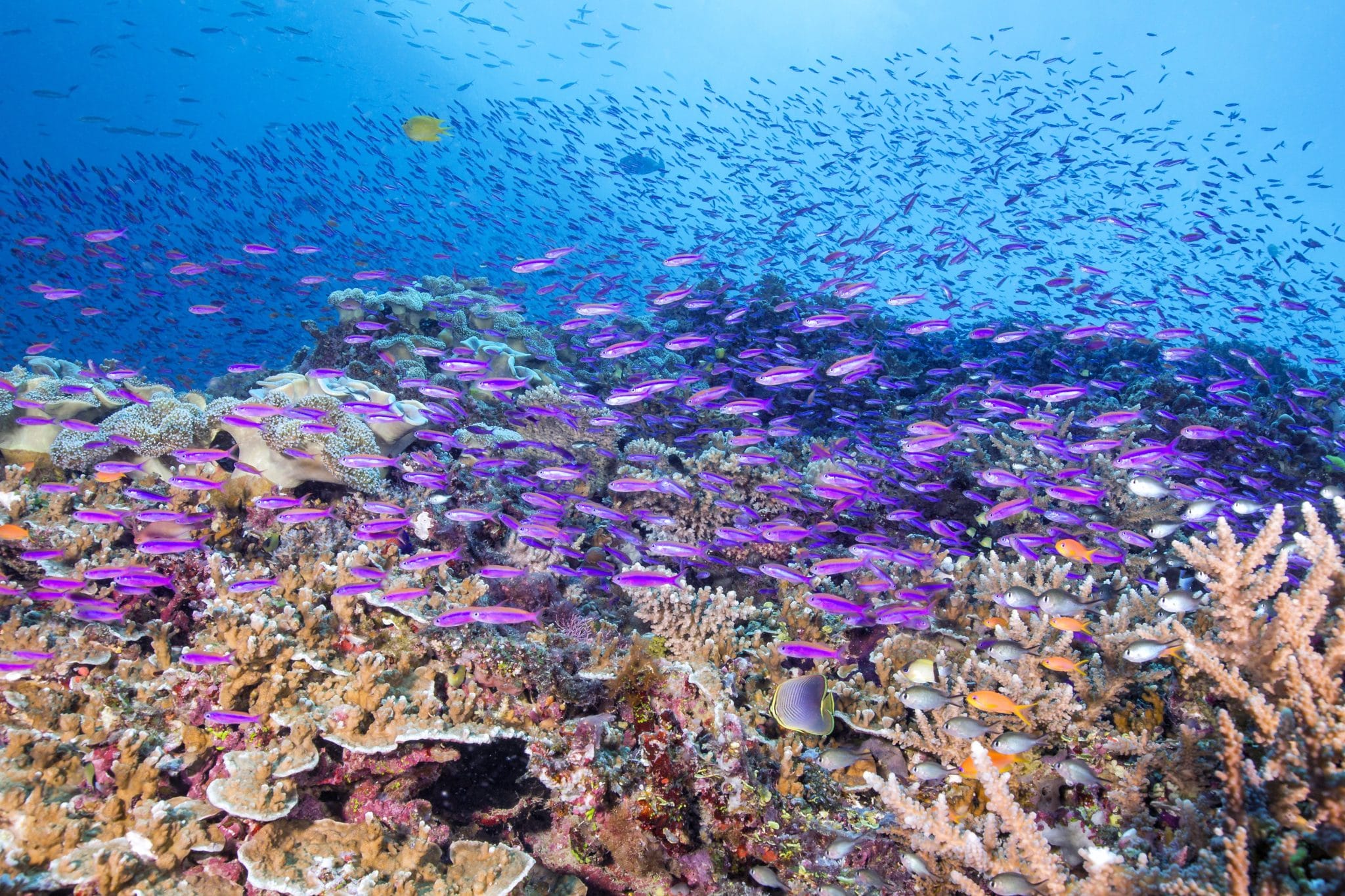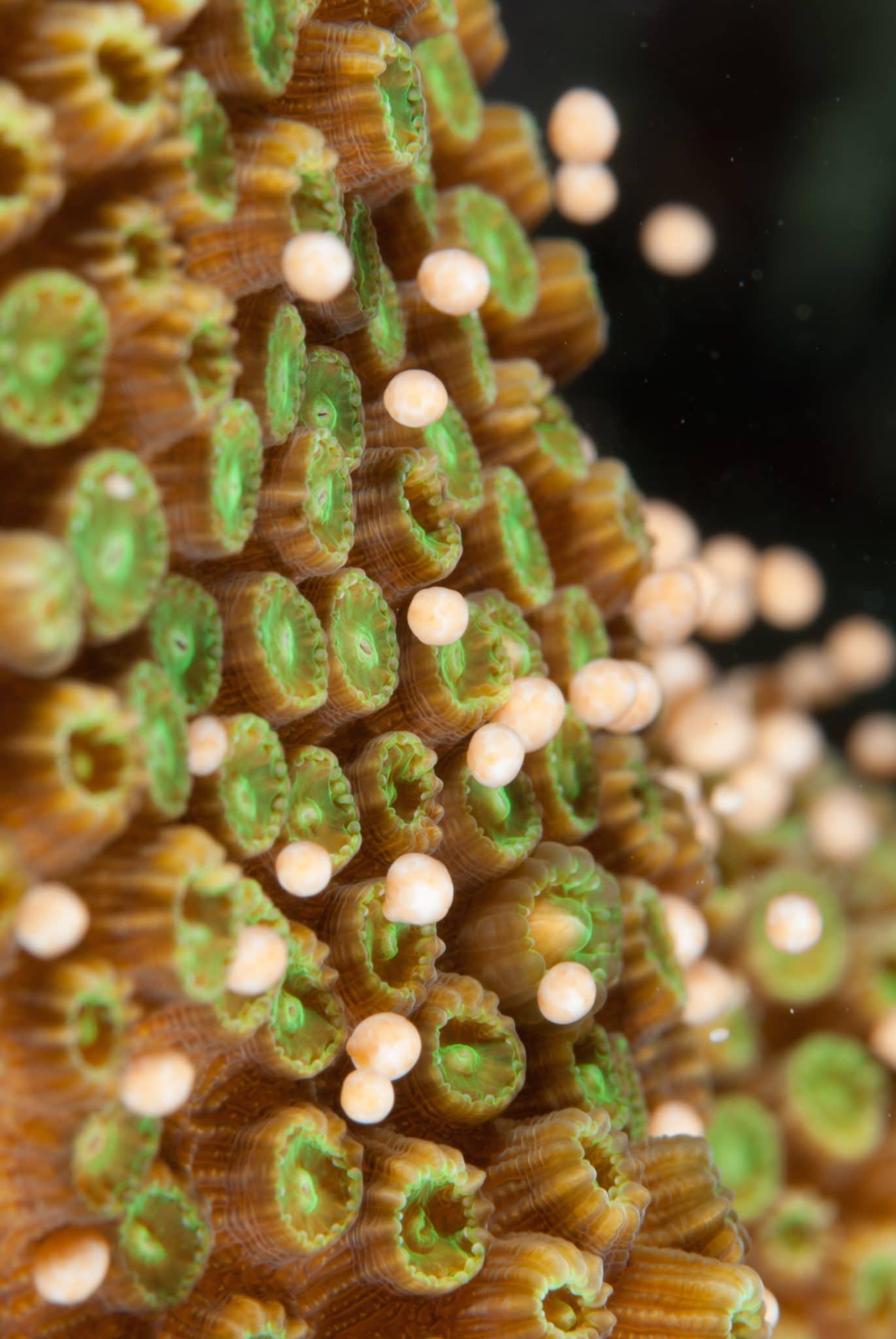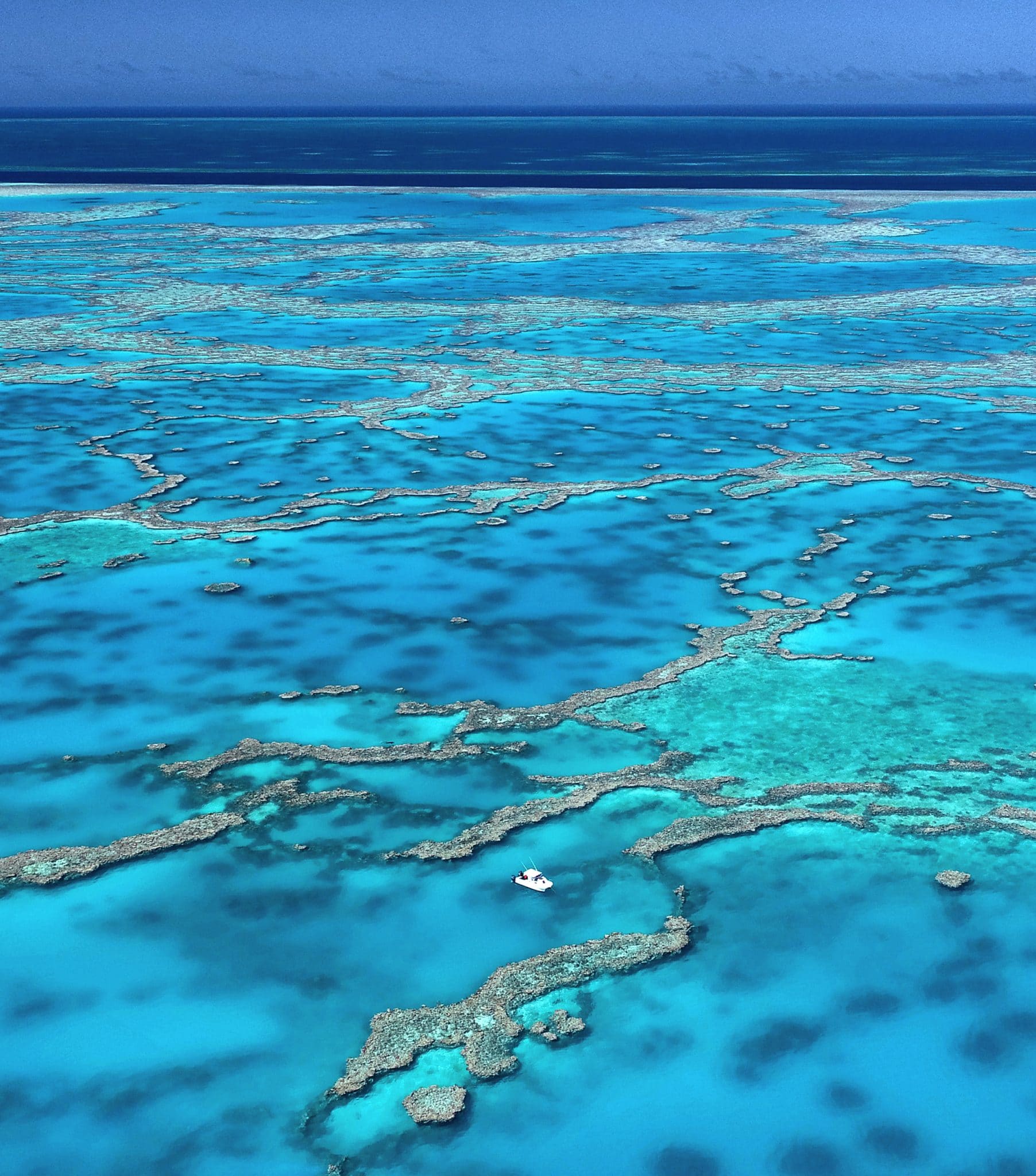Marine Life & Conservation Blogs
World Reef Day: Best Reef Conservation projects and dives from around the world
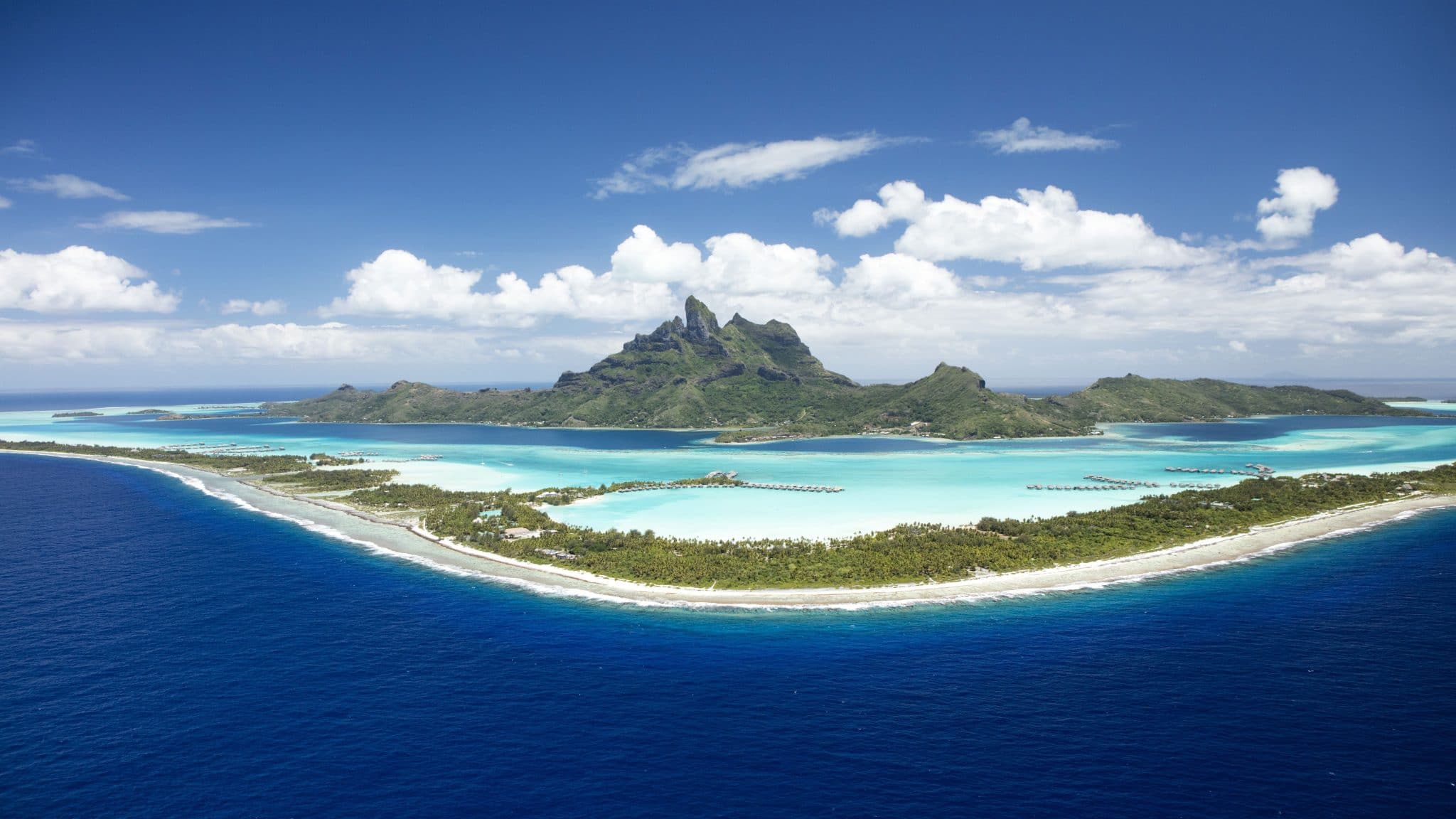
Top Coral Reef Hope Spots
Around the world, destinations are running coral conservation programs that both local communities and visitors can play a direct role in. The results so far have been nothing short of inspiring, proving that hope is not lost in saving coral. Here are PADI’s top coral reef hope spots and how you get involved next time you visit.
1. Maldives: Adopt a Coral Program
PADI Dive Resort Sheraton Maldives Full Moon & Spa is empowering guests to plant hope and become coral champions during their stay. Known as “Adopt a Coral”–which is part of Good Travel with Marriott Bonvoy in collaboration with Reefscapers, the goal is the program is to invite guests to help in planting coral on one of the largest man-made coral structures in the Maldives. Families can also take part in guided house reef snorkeling tours with the resort’s in-house marine biologist Amélie Carraut and kids can take part in her Little Marine Biologists for the day.
2. Tahiti: Pristine Reef Discoveries
Hope was certainly found in Tahiti at the beginning of 2022, when PADI Divers and scientists discovered one of the largest healthy reefs now on record, with two miles of rose-shaped coral spanning the ocean floor as deep as 100ft! The discovery has reminded us all of the importance of exploration and the role it plays in scientific discoveries that can help create ocean change.
Further supporting a healthy coral reef ecosystem in Tahiti are the Coral Gardners, a program designed to plant one million corals and restore life back into the ocean. You can even adopt or gift ten different species of coral and receive growth updates.
3. Fiji: Communities Championing Coral Restoration
Did you know that Fiji is home to 42% of the world’s coral species that span over 10,000 square kilometers throughout the country? There is a reason why the destination is known as the “Soft Coral Capital of the World” and there are numerous coral restoration projects dedicated to preserving it.
In partnership with Fiji’s Ministry of Fisheries, the non-profit Aquaculture Development for the Environment has launched the One Million Coral Planting Program throughout the 333 islands of Fiji. Teaming up with over 20 different coastal villages, each community has a target of collectively planting 1,000 corals per week.
There are also numerous resorts that have programs designed on educating visitors on how they can play a role in rejuvenating and protecting the surrounding coral reefs they are visiting. One of the best places to do this is at PADI Dive Resort Jean-Michel Cousteau Fiji, where their onsite marine biologist teaches guests how to coral plant and help nurse nearly 100 fragments of live coral back to full health.
For those visiting with families, PADI Dive Resort Outrigger Fiji has one of the best reef restoration programs for youth, who host a coral conservation program for kids and teens every Wednesday–with the goal of having them return back home as official eco-warriors.
4. Bonaire: The Coral Pledge to Tourists
The island nation of Bonaire has created a pledge known as ‘The Bonaire Bond’ to help preserve and protect its natural beauty above and below the surface of their surrounding tropical waters.Those who visit the island are asked to sign their pledge to respect the island’s rules designed to help sustain the environment; in return, Bonaire pledges to adopt coral trees through Reef Renewal Bonaire for every visitor who signs the pledge, with the long-term goal of restoring both the coral reefs surrounding the island and marine animals who call it home. Each coral tree is predicted to help nurture 100 pieces of coral.
5. Australia: Become a Reef Ranger at the Great Barrier Reef
Australia’s greatest natural icon–the Great Barrier Reef– stretches 2300 km down Queensland’s coastline and covers more than 344,400km in total. Did you know that the Great Barrier Reef is also the only living organism that can be seen from space and is bigger than the countries of the UK, Switzerland, and Holland combined?
You can become an actual Reef Ranger for the Great Barrier Reef with PADI Dive Centre Keppel Dive & Snorkel, where you will not only get to snorkel over pristine local corals surrounding Keppel Island but have a real role in conducting reef surveys and monitoring reef health.
Or, you can take your PADI Open Water Diver course out at Ludy Musgrave HQ in Bundaberg, where you will learn to dive at some of the most remote and untouched sites only accessible from their pontoon. After you are certified you will also get to take part in citizen science initiatives led by their Master Reef Guides. After a day of exploring in the turquoise waters, you will spend the night out at sea floating under the stars in their zero-carbon accommodation that is 100% powered by wind and solar.
PADI’s Favorite Reef Dives
One of the most magical parts about diving is having the opportunity to have an intimate experience examining and appreciating the wonderfully colourful world of coral reefs and all the life that calls it home. Here are PADI’s favorite reef dives around the world to put on your bucket list for this year.
1. Indonesia: The Coral Triangle
Raja Ampat is located at the intersection of the Indian and Pacific Oceans, right in the heart of the prestigious Coral Triangle. The powerful deep sea currents funnel nutrients into the coral reefs, making Raja Ampat a “species factory.” Home to over 600 species of hard coral, or about 75% of the total in the entire world, Raja Ampat contains the richest coral reefs on the earth and, thus, welcomes in everything from sharks to manta rays and whales.
Best time to dive in Indonesia: October – April
2. Australia: Coral Conservation Expeditions
Sign yourself up for an all-immersive, multi-day expedition through the Great Barrier Reef with No Limit Adventures. The itinerary is created to offer a deep dive into conservation, where you will get your PADI Open Water Diver certification, help monitor the resilience of the surrounding reefs and support the Cairns Turtle Rehabilitation Centre. Led by the Great Barrier Reef Marine Park Authority, you will get over a dozen dives while upon this multi-day liveaboard.
Best time to dive in Australia: year-round, but November is the best month for coral spawning
3. Fiji: The Soft Coral Capital of the World
Leading the way in nature-based tourism are the 333 islands of Fiji, which have taken a destination-wide approach to ensure that Fiji remains the Soft Coral Capital of the World. Even after Cyclone Winston ripped through the South Pacific in 2016, the damaged reefs have completely rebounded thanks to the extra love and nurturing from locals and tourists alike.
One of the best success stories–and places to dive with coral–in Fiji is Waya Island in the Yasawas. With house reefs creating a sparkly sensation of underwater hues as soon as you enter from the shoreline, you can easily spend hours snorkeling, diving and simply admiring the purples, oranges, pinks and blue corals.
Best time to dive in Fiji: July to December
4. Belize: Corals Fit for Royals
The Belize Barrier Reef is perhaps one of the most amazing success stories, having actually been removed from the UNESCO list of World Heritage in Danger. The conservation efforts led by local communities have shown the true power that grassroots efforts can have for real ocean change. In fact, earlier this year Prince William and Kate Middleton dove into the Belize Barrier Reef and surfaced absolutely praising the country for their incredible marine conservation work.
While the Blue Hole is the most iconic spot within the world’s largest reef system, there are tons of other great spots within the reef to explore as well. This includes the Turneffe Atoll, which is the largest atoll in Belize and has a perfectly formed ring-shaped reef creating crystal clear lagoons to dive in.
Best time to dive in Belize: April to June
5. Phillippines: The Seventh Wonder of the World
Tubbataha National Park has just recently been dubbed as the Seventh Wonder of the World and a UNESCO World Heritage Site–and for good reason. With there being a special array of over 100 different types of coral and home to a dozen different species of whale, words really can not describe how sensational diving here is.
Best time to dive in Phillippines: March to June
6. French Polynesia: A Photographer’s Paradise
The Fakarava Atoll in French Polynesia is not only a UNESCO Biosphere Reserve but equally the dream spot for any underwater photographer. With an abundance of diversity in healthy reefs teeming with hard corals and home to grey reef sharks, humpback whales, hammerhead sharks, dolphins, and mantas–it can be overwhelming to choose what shot you want to capture.
Best time to dive in French Polynesia: year-round, with July-December, also being humpback whale season
7. Egypt: The Speedy Success Story
The Red Sea is one of the world’s most recent success stories, with corals so healthy and in such abundance, you will find it hard to believe that the coastline is a sandy, barren desert.
The current here plays a big factor in keeping the corals clean and bringing in a steady flow of zooplankton to keep the reefs nourished, making the coral gardens some of the fastest-growing on the planet. The best case study for this is Sharm el Sheikh, which now thanks to the healthy reef ecosystem is now welcoming back larger marine species like grey sharks and whale sharks back home. One reef not to miss is the Ras Nasrani long coral wall, which is perfect for all experience levels in the ocean.
Best time to dive in Egypt: March-May or September-November
Header IMage: © Grégoire Le Bacon Tahiti Nui Helicopters
Marine Life & Conservation Blogs
Book Review: Shells of the World

Shells of the World: A Natural History by M.G. Harasewych
Shells of the world is a guide to the world of marine, shelled molluscs. And what a varied and interesting world it is. Some of my favourite things to find on a dive are detailed in this book, including disco clams (or Electric File Clams as they are correctly names), the cephalopods, giant clams and sea hares. There are also many on my wish list, top of which is the Nautilus.
Each chapter provides a detailed description of the species, along with beautiful images. You can dive deeper and discover where they live, both with global distribution and the habitat they prefer. Learn about their diet, reproduction and diversity.
Having dipped in and out of this lovely book over the past few weeks, it has inspired me to learn more about this group of animals that we see on most divers, wherever we are in the world. Some of the shells are incredibly intricate and beautiful. I have always agreed with never collecting, or touching, marine life. The description of a certain set of cone shells should be a warning to those that are happy to pick up marine life! One of the cone shells has a local name called the cigarette snail. Why? Because once the venom is in your system from this animal, you only have time to smoke one cigarette before the affects of the venom are fatal!
What the publisher says:
Mollusks are invertebrate animals with a remarkable natural history and a rich fossil record, and their shells are prized for their breathtaking variety and exquisite beauty. Shells of the World provides a wide-ranging look at the incredible diversity of marine mollusks. An informative introduction outlines the lineages covered, followed by a directory section, split into classes, that profiles a broad selection of different taxa to give a sense of their sheer numbers and variety.
- Features hundreds of beautiful color photos, depicting both the live animals and their shells
- Discusses mollusk evolution, anatomy, life cycles, behavior, and ecology
- Describes unique characteristics, distribution, habitat, and size
- Provides valuable insights into the conservation of the world’s marine mollusks
- Ideal for malacologists and shell collectors everywhere
About the Author:
M. G. Harasewych is research zoologist emeritus and former curator in the Department of Invertebrate Zoology at the Smithsonian Institution’s National Museum of Natural History. A fellow of the American Association for the Advancement of Science, he is the author (with Fabio Moretzsohn) of The Book of Shells: A Life-Size Guide to Identifying and Classifying Six Hundred Seashells.
Book Details
Publisher: Princeton University Press
Hardcover
Price: £25
ISBN: 9780691248271
Published: 9th April, 2024
Blogs
The Ocean Cleanup Breaks 10,000,000 KG Barrier

The Ocean Cleanup, the global non-profit project, has removed a verified all-time total of ten million kilograms (22 million lbs.) of trash from oceans and rivers around the world – approximately the same weight as the Eiffel Tower.
To complete its mission of ridding the oceans of plastic, The Ocean Cleanup uses a dual strategy: cleaning up the Great Pacific Garbage Patch (GPGP) to remove the plastic already afloat in the oceans, while stopping the flow of plastic from the world’s most polluting rivers.
Through cleaning operations in the GPGP and in rivers in eight countries, the cumulative total of trash removed has now surpassed ten million kilograms. This milestone demonstrates the acceleration of The Ocean Cleanup’s impact, while underlining the astonishing scale of the plastic pollution problem and the need for continued support and action.
While encouraging for the mission, this milestone is only a staging point: millions more tons of plastic still pollute our oceans and The Ocean Cleanup intends to continue learning, improving and innovating to solve this global catastrophe.
This announcement comes as governments from around the world meet to continue negotiations to develop a new legally binding instrument to end plastic pollution at INC4 in Ottawa, Canada. Representatives of The Ocean Cleanup will be in attendance and the organization will be urging decision-makers to collaborate towards a comprehensive and ambitious global treaty which addresses plastic at all stages of its life cycle and in all marine environments worldwide, including in areas beyond national jurisdiction.
It is encouraging to see that the need for remediation is reflected in the various options for potential treaty provisions. It is essential that the final treaty contains clear targets for the remediation of legacy plastic pollution, and reduction of riverine plastic emissions.
Tackling plastic pollution requires innovative and impactful solutions. The treaty should therefore incentivize the innovation ecosystem by fostering innovations that make maximal use of data, technology and scientific knowledge – such as those designed and deployed by The Ocean Cleanup.
‘After many tough years of trial and error, it’s amazing to see our work is starting to pay off – and I am proud of the team who has brought us to this point.’ said Boyan Slat, Founder and CEO of The Ocean Cleanup. ‘While we still have a long way to go, our recent successes fill us with renewed confidence that the oceans can be cleaned.’
The Ocean Cleanup was founded in 2013 and captured its first plastic in 2019, with the first confirmed catch in the GPGP coming soon after the deployment of Interceptor 001 in Jakarta, Indonesia. After surpassing one million kilograms of trash removed in early 2022, the non-profit project has since progressed to the third iteration of its GPGP cleaning solution, known as System 03, and a network of Interceptors currently covering rivers in eight countries, with more deployments set for 2024.
About The Ocean Cleanup
The Ocean Cleanup is an international non-profit organization that develops and scales technologies to rid the world’s oceans of plastic. They aim to achieve this goal through a dual strategy: stemming the inflow via rivers and cleaning up the legacy plastic that has already accumulated in the ocean. For the latter, The Ocean Cleanup develops large-scale systems to efficiently concentrate the plastic for periodic removal. This plastic is tracked and traced through DNV’s chain of custody model to certify claims of origin when recycling it into new products. To curb the tide via rivers, The Ocean Cleanup has developed Interceptor™ solutions to halt and extract riverine plastic before it reaches the ocean. Founded in 2013 by Boyan Slat, The Ocean Cleanup now employs a broadly multi-disciplined team of approximately 140. The foundation is headquartered in Rotterdam, the Netherlands.
For more information, visit: theoceancleanup.com and follow @theoceancleanup on social media.
-

 News3 months ago
News3 months agoCapturing Critters in Lembeh Underwater Photography Workshop 2024: Event Roundup
-

 Marine Life & Conservation Blogs3 months ago
Marine Life & Conservation Blogs3 months agoCreature Feature: Swell Sharks
-

 Gear Reviews4 weeks ago
Gear Reviews4 weeks agoGEAR REVIEW – Revolutionising Diving Comfort: The Sharkskin T2 Chillproof Suit
-

 Blogs2 months ago
Blogs2 months agoMurex Resorts: Passport to Paradise!
-

 Blogs3 months ago
Blogs3 months agoDiver Discovering Whale Skeletons Beneath Ice Judged World’s Best Underwater Photograph
-

 News3 months ago
News3 months agoPADI Teams Up with Wellness Brand Neuro to Drive Ocean Change and Create a Blue State of Mind
-

 Gear Reviews3 months ago
Gear Reviews3 months agoGear Review: Oceanic+ Dive Housing for iPhone
-

 Marine Life & Conservation2 months ago
Marine Life & Conservation2 months agoSave the Manatee Club launches brand new webcams at Silver Springs State Park, Florida


